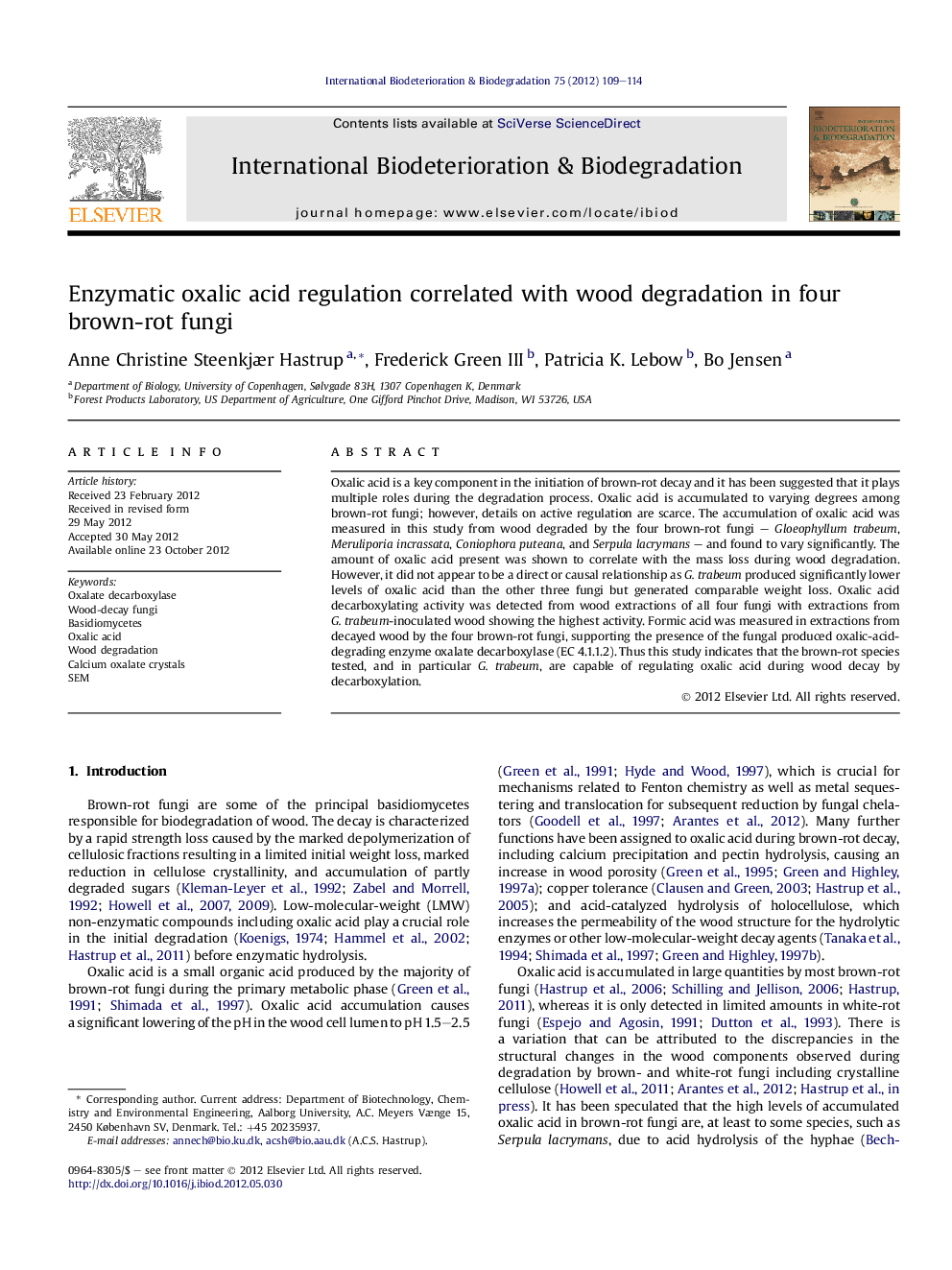| Article ID | Journal | Published Year | Pages | File Type |
|---|---|---|---|---|
| 4365211 | International Biodeterioration & Biodegradation | 2012 | 6 Pages |
Oxalic acid is a key component in the initiation of brown-rot decay and it has been suggested that it plays multiple roles during the degradation process. Oxalic acid is accumulated to varying degrees among brown-rot fungi; however, details on active regulation are scarce. The accumulation of oxalic acid was measured in this study from wood degraded by the four brown-rot fungi – Gloeophyllum trabeum, Meruliporia incrassata, Coniophora puteana, and Serpula lacrymans – and found to vary significantly. The amount of oxalic acid present was shown to correlate with the mass loss during wood degradation. However, it did not appear to be a direct or causal relationship as G. trabeum produced significantly lower levels of oxalic acid than the other three fungi but generated comparable weight loss. Oxalic acid decarboxylating activity was detected from wood extractions of all four fungi with extractions from G. trabeum-inoculated wood showing the highest activity. Formic acid was measured in extractions from decayed wood by the four brown-rot fungi, supporting the presence of the fungal produced oxalic-acid-degrading enzyme oxalate decarboxylase (EC 4.1.1.2). Thus this study indicates that the brown-rot species tested, and in particular G. trabeum, are capable of regulating oxalic acid during wood decay by decarboxylation.
► Study of Gloeophyllum trabeum, Serpula lacrymans, Coniophora puteana, Meruliporia incrassata. ► Variation in oxalic acid accumulation and pH regulation at similar weight loss. ► Formic acid was measured in extractions from wood inoculated by all four species. ► Detection of oxalic acid decarboxylating activity in particular from G. trabeum. ► Visual presence of calcium oxalate crystals in S. lacrymans and C. puteana but not in G. trabeum.
